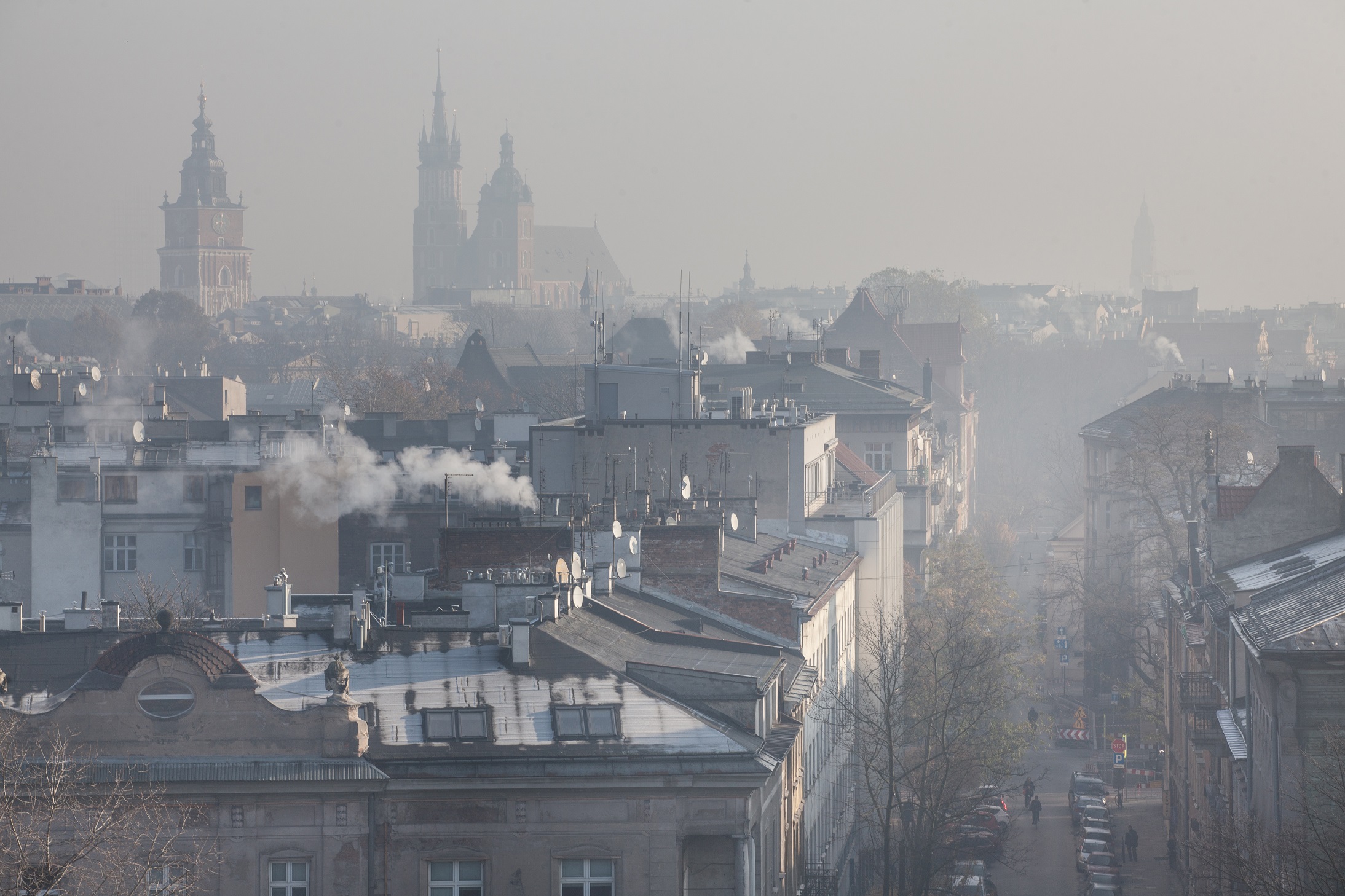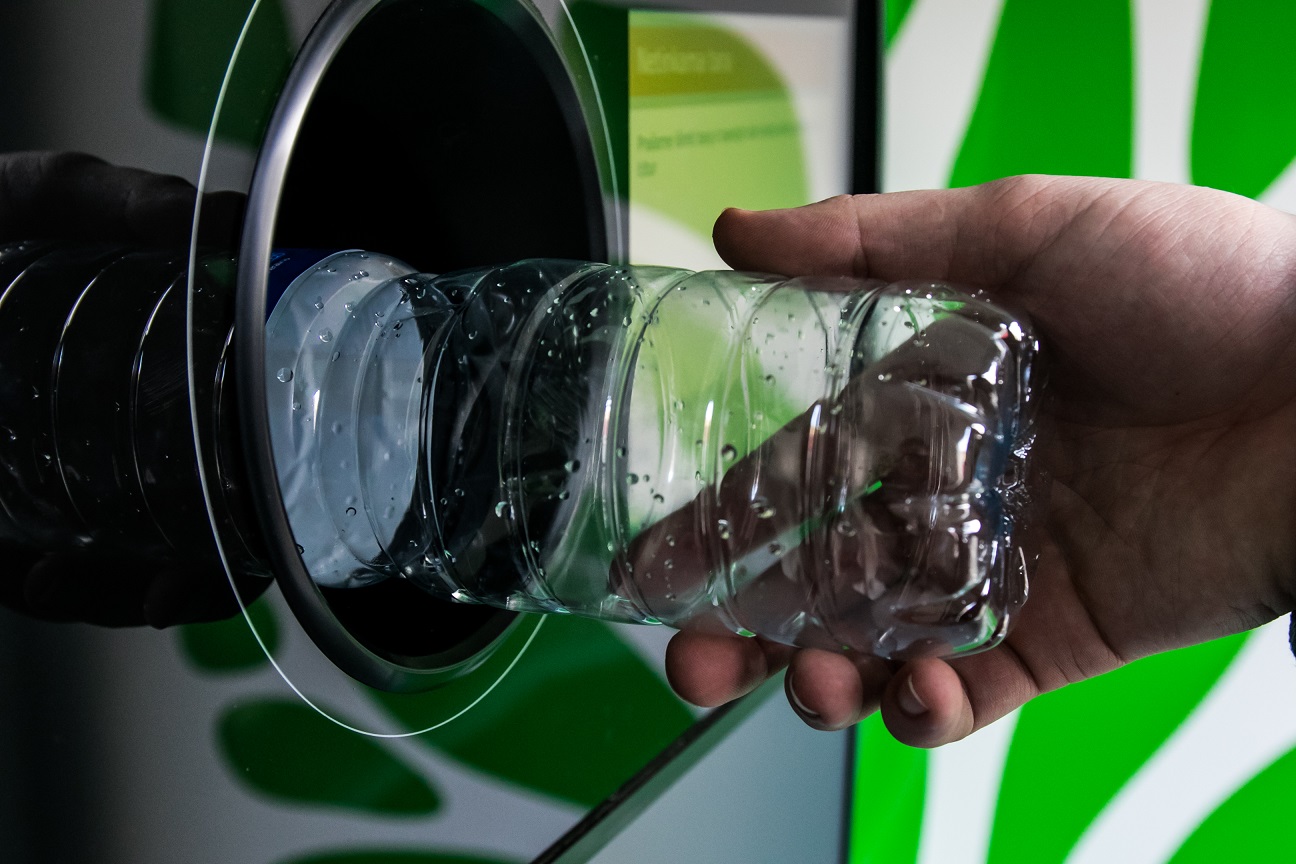Where does smog come from and how can we fight it?

There is something that makes Poland stand out on the map of Europe. It’s the levels of air pollution – especially in winter. On the graphics depicting the map of pollution in Europe, our country is always a large red spot in a sea of green. Why is smog such a problem in Poland? How are we trying, and how should we fight it?
At the time of writing this passage (12 March 2024, 2:30PM), Wrocław is ranked as the 9th most polluted city, according to IQAir. It’s the only European city to hold a place in the top ten. It is 11˚C in Wrocław today, and as reported in the city’s official website, the concentration of PM2.5 is 39 µg/m³. Citizens who are elderly, pregnant, suffering from heart or respiratory ailments and children are advised to limit their time spent outdoors. 11 degrees is a temperature typical for early spring, hence the buildings don’t require as much heating as they do during the frosty winter. So what’s the source of this smog?
What’s smog made of?
The air we inhale consists of 78% nitrogen, 21% oxygen, 1% other gases (e.g. argon, neon, helium, methane) and 0,04% carbon dioxide. It also contains variable components, depending on geographical location, time of the year, human activity or natural events (such as volcanic eruptions etc.) – these include nitrous oxide, which is one of the gases with the greatest impact on greenhouse effect; ozone, which causes the distinctive air scent after the storm, or sulphur dioxide – a by-product of fossil fuel combustion.
Clean air cannot be seen or smelled. It’s a different case for smog though. It can often be both seen and smelled. The World Health Organization defines smog as a “contamination of the indoor or outdoor environment by any chemical, physical or biological agent that modifies the natural characteristics of the atmosphere”. It’s made up of particulate matter (containing i.a. heavy metals, dioxins and polycyclic aromatic hydrocarbons) and gases – nitrogen oxides, carbon monoxide, sulphur dioxide.
Let’s talk about particulate matter. It contains a diverse amount of substances – both organic and inorganic, solid and liquid, which disperse in the air. As we breathe them, they enter our bodies through the respiratory system. The smaller they are, the easier and deeper. The most harmful particles are those with a diameter of less than 10 micrometers (as a reminder: 1 µm = 0,000001 m), known as PM10, and those smaller than 2.5 micrometers, i.e. PM2.5.
Let me remind you, on 12 March the concentration of PM2.5 was 39 µg/m³ in Wrocław. According to World Health Organizations guidelines, daily concentration of PM2.5 shouldn’t exceed 15 µg/m³. The Polish standard is more liberal – the permissible level is 25 µg/m³.
For PM10, the WHO recommends a daily standard of 45 µg/m³, the Chief Inspectorate of Environmental Protection – 50 µg/m³.
The WHO introduced new air quality recommendations in 2021, tightening those in effect since 2005 (these were the values recommended by the GIOŚ).
Smog and health
The WHO recognises air pollution as one of the greatest environmental threats to human health. In Poland, it is responsible for about 45,000 excess deaths per year, although these numbers may be underestimated. Researchers from Harvard University and University College London in 2021 published a report in which they conclude that there are twice as many. Their calculations prove that 23.8 percent of deaths in our country are related to air pollution (93,800 per year).
Why is smog so harmful to us? The toxins we breathe in get into our lungs, bronchi, and PM2.5 particles – even into our blood. When we stay in the polluted air, we cough, get a hoarse voice, and find it more difficult to breathe. Even common infections of the respiratory system can last longer or be more severe. In people with asthma or chronic obstructive pulmonary disease, their symptoms are exacerbated. The same is true for people with cardiovascular disease or diabetes. On smoggy days, doctors record more strokes and heart attacks. The most vulnerable to the consequences of breathing smog are children, pregnant people and the elderly.
One of the components of particulate matter is benzo(a)pyrene, a compound formed from the combustion of fuels (such as coal). It has carcinogenic properties, like other compounds in its group of polycyclic aromatic hydrocarbons and can accumulate in the body. Benzo(a)pyrene is also one of the components of nicotine smoke. The Polish Smog Alarm has calculated a few years ago that the average resident of Kraków, staying outdoors for two hours, “smokes” the equivalent of 5.5 cigarettes a day. In Warsaw it was two cigarettes, in Rybnik nine, in Sucha Beskidzka as many as twelve.
Where does smog come from?
Smog is quite a diverse phenomenon, depending on terrain shape (e.g. the city of Krakow is located in the Vistula River valley and is surrounded from the north and south by hills that make it difficult to “ventilate” the city), humidity, weather or human activity.
There are two types of it. The first is Los Angeles-type (photochemical) smog, which is formed during summer (at 25-35˚C) and is caused by vehicular traffic.
The second is classic smog, known as acidic or London smog. Anyone who has watched “The Crown” will remember the episode about the great smog in 1952, which paralysed the city and led to the deaths of some 12,000 people. On December 5, London was densely fogged, and the weather grew colder. Residents kept adding to their furnaces, and the fog grew thicker and thicker. People were lost in the streets because the visibility was terrible. Hospitals were bursting at the seams. The great smog lasted until 9 December, and one of its consequences was the enactment of the Clean Air Act of 1956.
The cause of classic smog is, as in London, so-called low emissions, or pollution from boilers and transportation. Low, because the dust and gases remain at heights of up to 40 meters. Industrial plants also contribute their share to the formation of smog.
Polish smog
There are about three million below-fifth-class boilers, known as “kopciuchy”, being used in Poland. Their number is decreasing every year, thanks to, among others, the Clean Air program and numerous local government programs (such as Kawka in Poznań), but they are still a massive source of pollution. It’s because everything is burned in them, not only coal, but also garbage or old furniture. From January 1, 2024, a ban on the sale of mine waste and the worst-quality fine coal is again in force in Poland. It had been suspended for the last year and a half.
Households are primarily responsible for air pollution. According to the Polish Smog Alarm, they emit 86 percent of particulate matter, 93 percent of polycyclic aromatic hydrocarbons and nearly 100 percent of pollution from the illegal burning of plastics.
We hold the European record for the number of registered cars: 687 per thousand inhabitants. The average age of a car in Poland in 2022 was 15.8 years, as reported by the Automotive Market Research Institute SAMAR. Old vehicles emit more pollution than those produced today.
Not only exhaust fumes coming out of the tailpipes contribute to the smog, but also dust formed by the abrasion of tires and brake pads when starting and braking the vehicle. Cars emit nitrogen oxides and so-called volatile organic substances. The most harmful are those with diesel engines.
The third source of pollution is industry, which accounts for 6% of PM2.5 emissions. These are mainly power plants, that emit, in addition to dust, heavy metals, nitrogen oxides and sulphur dioxide.
How can we fight the smog?
We will examine this using the example of Rybnik, a city of more than 100,000 inhabitants in southern Poland. At the beginning of the year, the city authorities proudly announced that in 2023 the lowest ever measurements of the annual average concentration of PM10 dust. The annual average concentration is an important data. The WHO recommends that for PM10 it should not exceed 15 µg/m³ and for PM2.5 it should not exceed 5µg/m³. The GIOŚ, on the other hand, recommends 40 and 20 µg/m³ respectively. The permissible number of exceedances of daily PM10 concentrations in Poland is 35 times per year.
How was it in Rybnik? Last year, only 16 days exceeded the daily standard of PM10 concentration, and the annual average was 23 µg/m³ (in 2022 it was 28 µg/m³). As a reminder: in 2016, the average resident of this city “smoked” the equivalent of nine cigarettes per day. In 2017, due to significant exceedances of air pollution, schools had to be closed.
“We started our journey of nine years by addressing the fact that smog exists at all,” said Agnieszka Skupień, spokeswoman for the Rybnik City Hall, in an interview with Energetyka24.com.
– Our region is closely linked to the mining sector. Here, everyone had someone in family who worked in a mine. Mining had a very strong impact on the city, so saying that from then on we would no longer burn coal required a great deal of courage and wasn’t easy.
Residents were convinced that the smog over the city had always been there and they still lived somehow, so why change it?
Over the years, residents’ attitudes have changed. Rybnik residents have submitted the largest number of applications in Poland to the government’s Clean Air program. The program enables co-financing of the replacement of old and inefficient heat sources for new ones and for thermo-modernisation of buildings. Moreover, the city and the voivodeship launched its own subsidies, which benefited residents. They received not only financial support, but also advice on how to fill in grant applications. The campaign was supported by local ambassadors, such as doctors. At the same time, the municipal police monitored residents for the implementation of the anti-smog resolution approved in 2017 by the Silesian Voivodeship.
By the end of 2023, around 3,900 of the more than 4,500 “kopciuchy” had been removed. The plan for this year is to remove another hundred. Anti-smog resolutions regulate the issues of prohibition of use, replacement of the most emitting heating sources, as well as installing eco-friendlier ones in newly constructed buildings. Each voivodship sets slightly different rules.
In the Wielkopolskie Voivodeship, the resolution came into effect on 1 May 2018. From that date, it is forbidden to burn e.g. brown coal, biomass with a moisture content of more than 20 per cent (wood must be seasoned for at least two years), fine coal dust or hard coal with a calorific value below 23 MJ/kg in furnaces or fireplaces. It also envisages the replacement of all “kopciuchy” by the end of 2023, and by the end of 2025 – tile stoves, fireplaces and freestanding stoves to meet the requirements of the EU Ecodesign Directive.
Let us remember that road transport (in addition to being one of the largest sources of carbon dioxide emissions into the atmosphere) has its share in creating smog. In order to reduce it, traffic charges were implemented in the city centre (in Poland, the first such project was proposed in Wrocław, but was rejected by city councillors) and Clean Transportation Zones were created.
The Act on Electromobility and Alternative Fuels stipulates that the entry of vehicles other than electric, hydrogen-powered and gas-powered is restricted to these areas.
It grants local authorities the possibility to shape their zones themselves. The first one is to be created in July this year in Warsaw. It was also supposed to start operating in Krakow, but the resolution to establish it was annulled by the voivodeship administrative court. According to the judge – the main flaw was the failure to define the boundaries of the CTZ (it was supposed to cover the entire city). Wrocław is also preparing to establish the zone.
Warsaw’s Clean Transport Zone will cover most of the city centre and some of the surrounding districts. Vehicles with petrol engines manufactured before 1997 or not meeting the Euro 2 standard won’t be allowed into the zone. The requirements will be tightened every two years. For the first four years the requirements will not apply to residents of Warsaw who pay taxes there.
Warsaw officials hope that this year particulate matter emissions will already be reduced by 20%, and by 2032 – by 69%.




